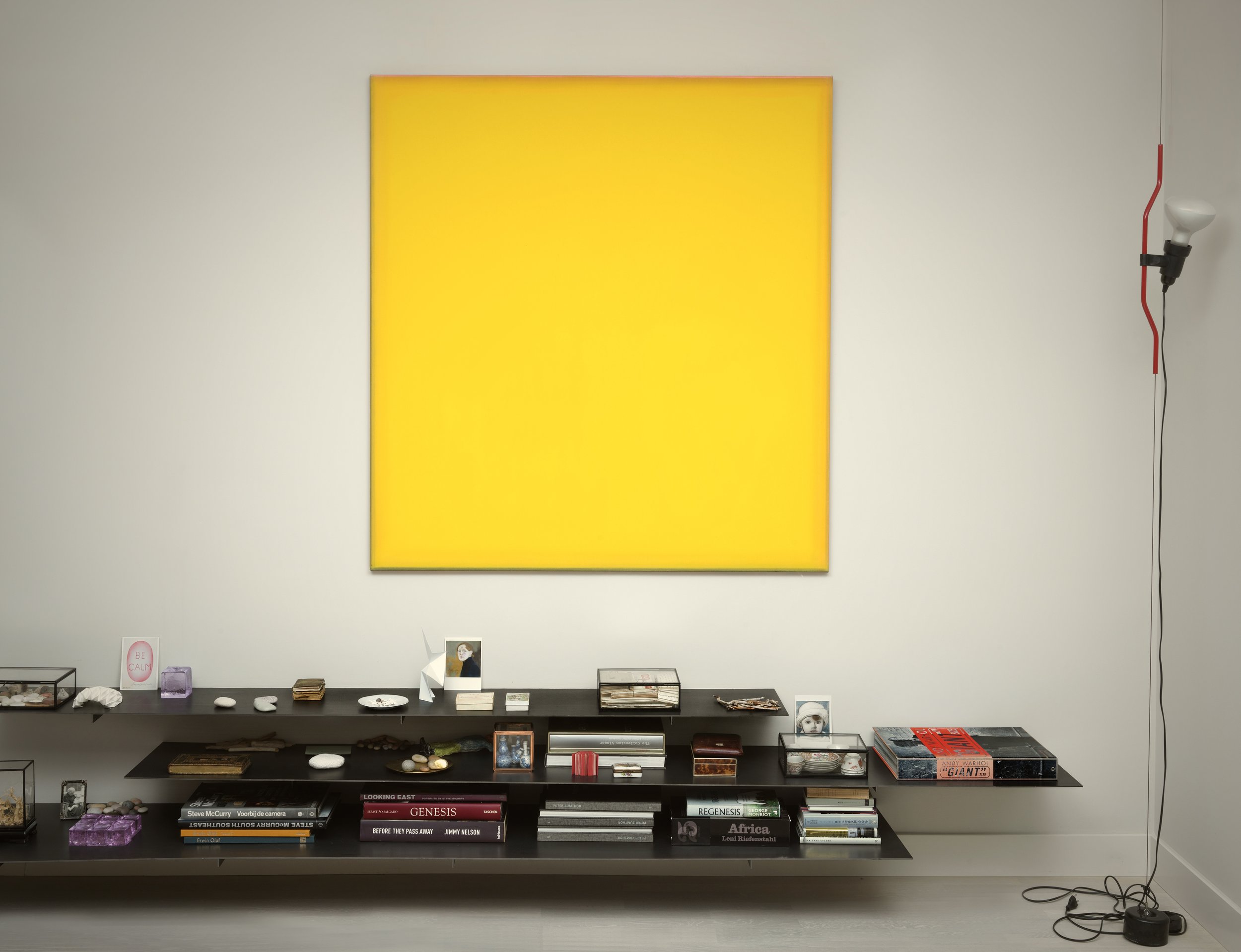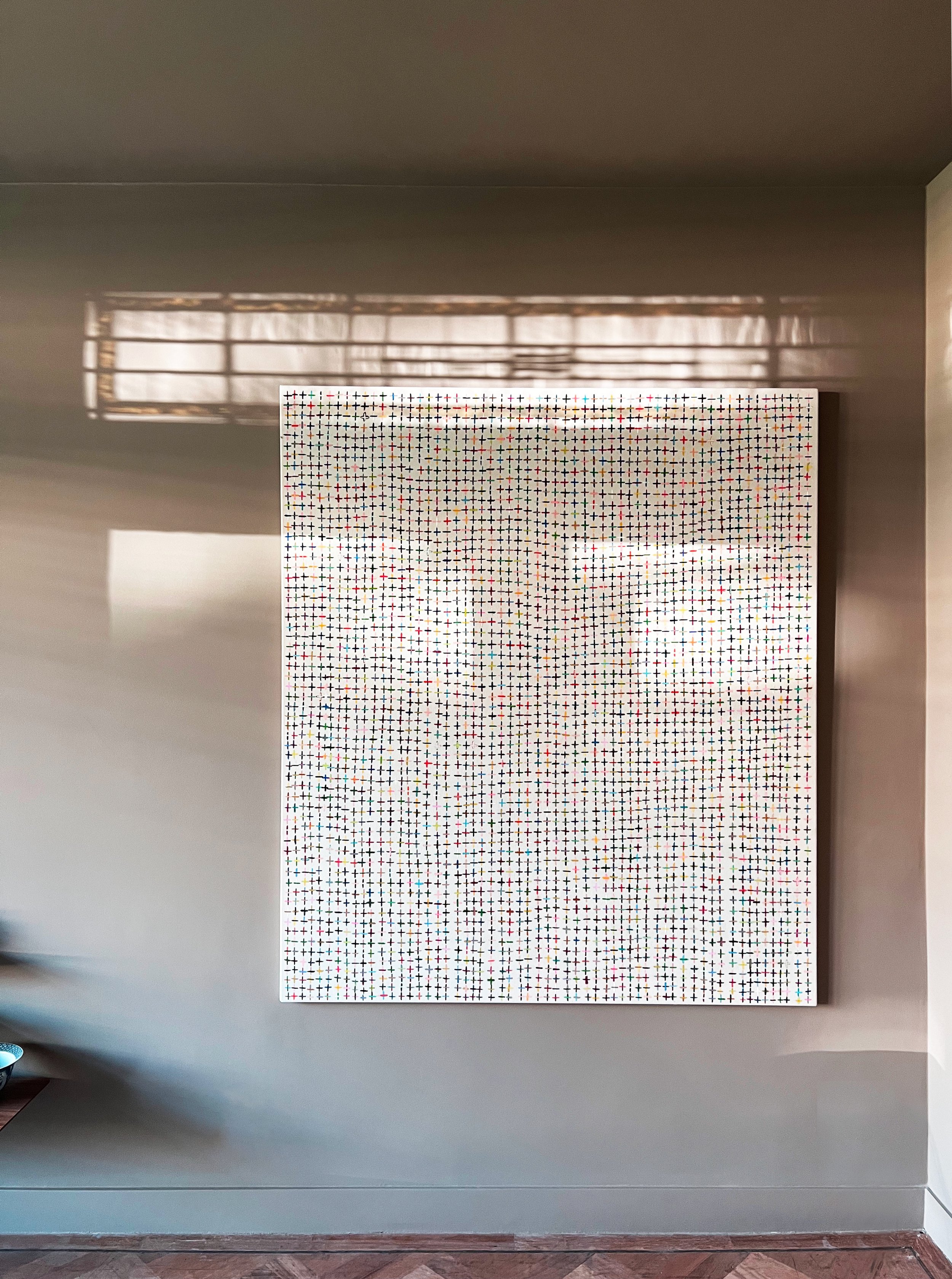This series was born from my travels across the Arctic plains and the vast landscapes of East Africa. In both places, I was captivated by the power of light—at times an ethereal, icy stillness, at others a blinding intensity. The colors I encountered were not only beautiful, but overwhelming-almost consuming.
I remember standing on the Arctic ice, watching how the blue light deepen, disorienting in its vastness—a silence so absolute it felt weightless. In East Africa, the air itself seemed to burn with an overpowering orange glow. These moments didn’t just inspire me; they stayed with me, shaping the way I see and translate color.
Each painting begins as a memory, but as I layer paint upon paint, the colors begin to take on a life of their own—sometimes revealing sometimes unexpected. Through delicate veils of pigment, I allow a dominant hue to emerge, rich with depth. The edges of the canvas expose the many layers beneath, a quiet reminder of process, of time, of how color lingers.
Color tells the story here. As Louise Bourgeois once said, “Color is a more powerful form of communication than language.” In these works, color is my language—translating memory, evoking moments beyond words.
THROUGH MY EYES
RHYTHMIC PARADOX
Rhythm, order and repetition have always fascinated me-not just as visual elements, but as a reflection of my deep need for order and curiosity about what happens when that order is disrupted. The human need for stability is undeniable, yet true growth and creativity often emerge when that stability is broken.
In this series, I explore the tension between structure and disruption, order and deviation. At first glance, the composition seems precise and organized, constructed from a grid of over 3,500 crosses. But the longer you look, the more subtle deviations appear: slight misalignments, unexpected pops of color disrupting the pattern. These imperfections aren’t flaws; they are what brings the work to life, creating a sense of movement and energy.
Inspired by minimalist composers like Steve Reich and Philip Glass—who create tension and movement through subtle variations within repetitive frameworks—I translate these principles into a visual experience. By introducing small disruptions in an otherwise ordered structure, the works invite the viewer to look again and again, to experience the balance between order and deviation..
For me, this work embodies the beauty of flux – the ceaseless flow of time and light throughout the day. Glass, in its shifting states, fascinates me. It moves between radiant brilliance and a soft, diffused glow.
Transparency plays a vital role in shaping how the viewer perceives the work. As light filters through the glass blocks, it creates reflections, shadows, and subtle nuances that shift throughout the day. This continuous transformation underscores the fleeting and ever-evolving nature of perception.
Each glass block, cast in a mold, is singular—its texture and reflections unique. Acting as both object and lens, the blocks refract, reflect, and diffuse light, forming a dialogue between material and illumination. Light reveals the transparency and surface of the glass, while the glass, in turn, transforms the light itself.
Flux captures the ephemeral beauty of the everyday—a reminder that nothing is truly static. What appears solid is, in truth, alive with movement and change. It invites you to pause, to observe to witness these subtle transformations. As the light shifts, so too does the work, revealing infinite variations."
FLUX
EQUILIBRIUM
This series emerged from my search for freedom within limitation.
A single fixed shape, a fixed size—stripped of unnecessary details. Only form, color, and space, where emptiness holds as much weight as the forms themselves. A delicate balance.
But something happened during the process. I stepped back and saw the blocks shift, their sizes fluctuating. It was an illusion I had not anticipated. What began as a structured system evolved into a visual dialogue, where order and perception merge.
These wall pieces reveal the deceptive nature of our senses. Though each color field is identical in size, precisely placed within a strict grid, the interplay of contrast and composition creates the illusion-a disparity between what is seen and what is real. Bright colors push forward, dark ones recede, making the static appear fluid.
This follows the principles of Gestalt psychology*: our brain instinctively seeks patterns, even where none exist. I am fascinated by this fine line—the divide between what we see and what we think we see.
*Gestalt psychology explores how our brain organizes individual elements into cohesive patterns, not only in visual perception but also in thought and understanding.



